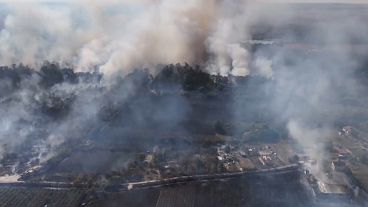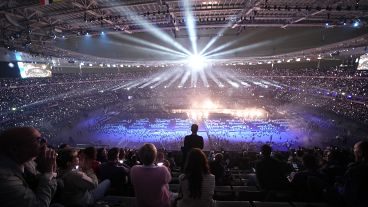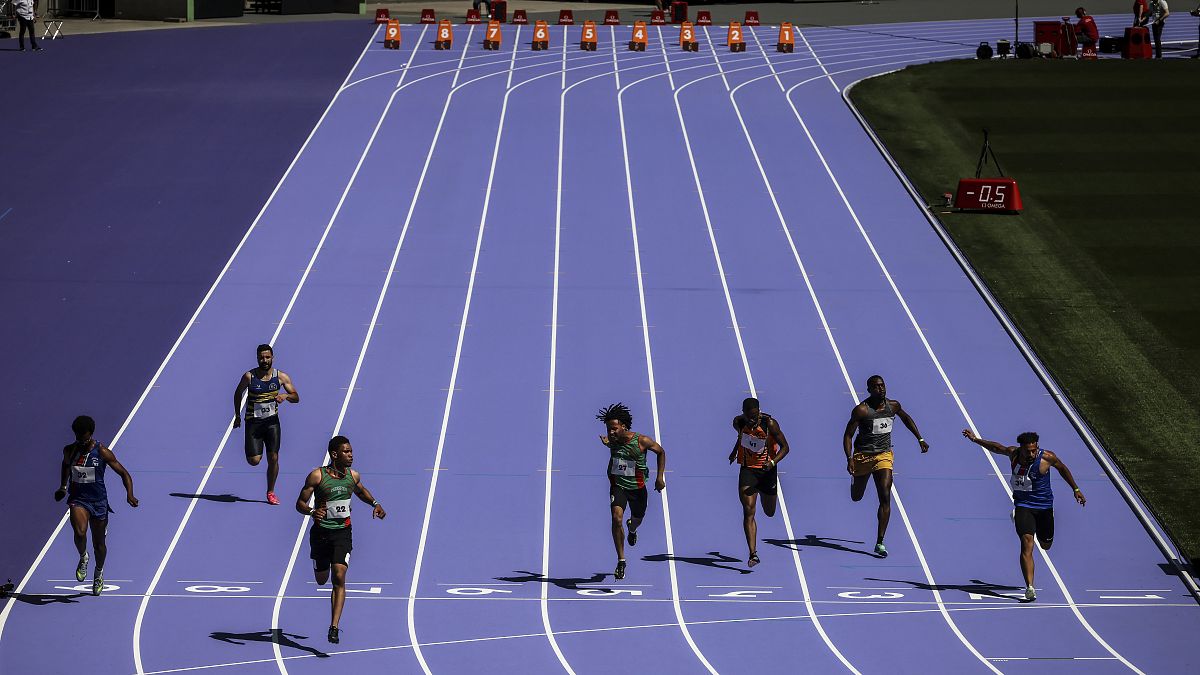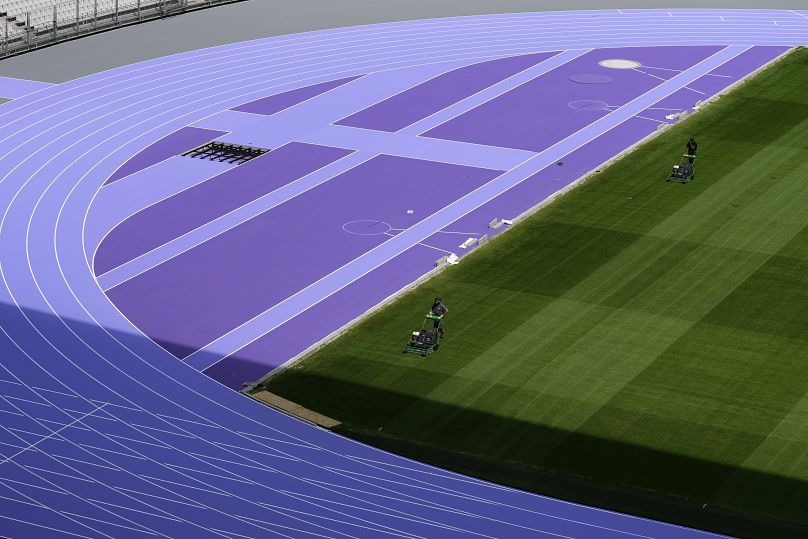This year’s purple Olympic track features a new geometric design in its bottom layer, intended to boost athletes' performances. Euronews Next spoke with the scientist who worked on the numerical modeling that led to the creation of the track.
Athletics events kick off on Thursday at the Paris Olympics on a brand new and technologically improved running track that is purple for the first time in the history of the games.
The track was developed by the Italian company Mondo, which has supplied the main stadium track for every Olympic Games since 1992.
Tokyo’s 2020 Olympic track was the common rust or brick red colour while Rio’s 2016 track was blue.
The hope is that the new geometrical shape of the air cells under this year’s track will help the athletes break new records.
Why is the athletics track purple?
This year, Olympic organisers chose the colour purple to replace the Stade de France stadium’s former blue track in line with the Paris 2024 official colours.
The colour grey, meanwhile, features on the turns to resemble a track in place in 1924 when Paris last staged the games.
The new nine-lane track is light purple in the middle and darker at the edges. It took almost three months to install the 23,114 square metres in the stadium.
Mondo incorporated calcium carbonate from the shells of mollusks, such as mussels and clams, provided by the Sardinian fishing cooperative Nieddittas, which repurposes mussel shells to help with sustainability.
What’s the new tech behind the track?
The running track aims to enhance the athletes’ performances and prevent injuries. It was created through Mondo’s partnership with the Milan Polytechnic’s Polymer Engineering Lab.
It has a top layer that makes contact with the shoes and a bottom layer with a lower density that is meant to be compressed when the athletes run. The track is not completely rubber on the bottom but is rather filled with air cells of a geometric shape.
“The main difference between [this track and] the previous technology is the shape of the air cells which you have in the lower part of the track,” Luca Andena, an associate professor of material science and technology at the Polytechnic University of Milan who performed the modelling for the track, told Euronews Next.
“The track must at the same time ensure safety by reducing the shocks and increasing the performance [of athletes] and the bottom layer is the one which is responsible for it,” he added.
This year’s track has elliptic geometric shapes developed through traditional design and numerical modelling.
Andena has for years supervised research on numerical modelling to develop these running tracks and created a high-level model to simulate different geometries to best influence the athletes’ performance.
“When the athletes land on the track, part of the energy of the run is transferred to the track, and then the track gives back. Depending on how this transfer works, it could work against you by [stopping] you or it can have a net propulsive effect,” Andena said.
“What we found out is that with this new geometry, we basically have a track, which is at the same time a little bit softer, which we believe athletes will enjoy (…) but at the same time, we have a net impulse which should give a slight increase in performance compared to the previous one,” he added.
Ideally, he said, the scientists could get feedback from athletes and also work with shoemakers to further improve the runners' performances.
Their next planned step is to use artificial intelligence (AI) with the model they created to find new geometries that could bring a new generation of track to the 2028 Los Angeles Olympics.
Will the track help the athletes break any world records?
“The new track should be at least as fast as Tokyo’s, but softer,” Andena said. “The softness should help runners in the final part of the sprint when it is harder for them to maintain their speed.”
Andena said he expects it to benefit 200m and 400m runners as well as those doing longer distances.
Yet extreme temperatures and weather could also influence their performance on the track, he added.
This story has been corrected to fix the spelling of the interviewee's name.
















